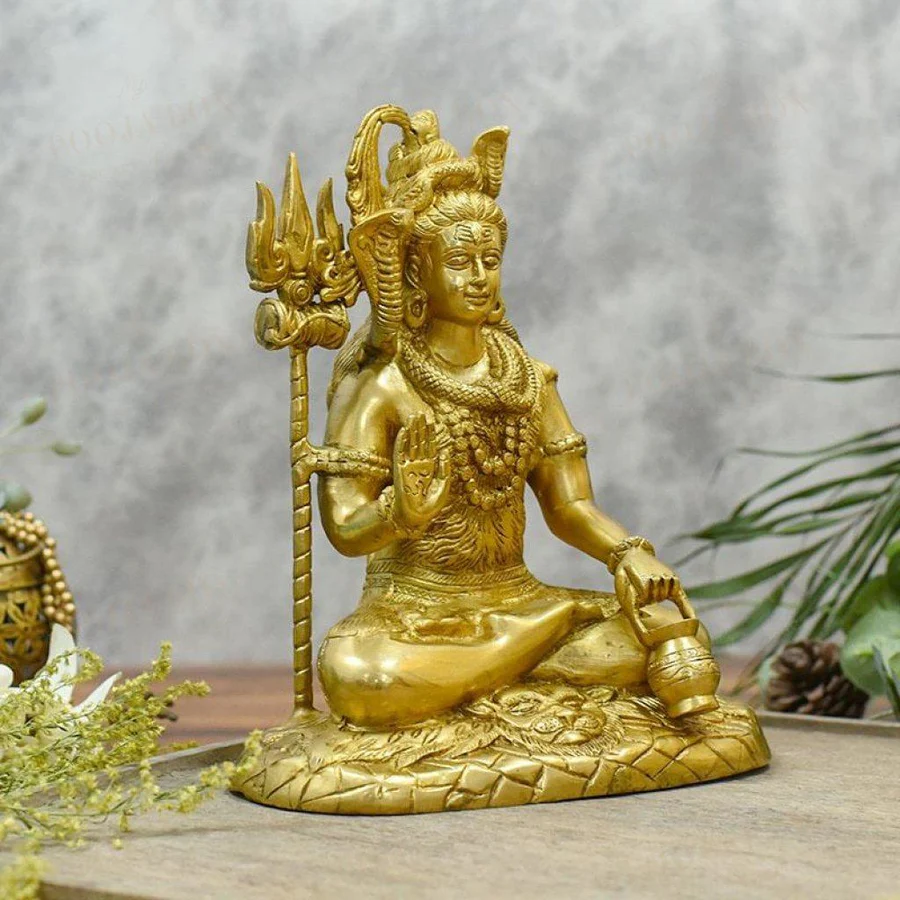Shivji: The Auspicious One
Shivji, also known as Shiva or Mahadeva, is one of the principal deities of Hinduism. Revered as the Supreme Being in Shaivism, one of the major traditions within Hinduism, Shiva is often depicted as a powerful ascetic, a benevolent protector, and a fearsome destroyer of evil. His name means "The Auspicious One," and his influence permeates every aspect of Hindu life and spirituality.
The Many Forms of Shiva
Shiva is a complex and multifaceted deity, representing the duality of creation and destruction, compassion and wrath, and asceticism and household life. He is commonly depicted in various forms and poses, each symbolizing different aspects of his divine nature.
-
Nataraja: The Cosmic Dancer
- As Nataraja, Shiva performs the Tandava, the cosmic dance of creation, preservation, and destruction. This form emphasizes the cyclical nature of the universe and the eternal rhythm of life.
-
Ardhanarishvara: The Androgynous Deity
- In this form, Shiva is depicted as half-male and half-female, symbolizing the unity and interdependence of masculine and feminine energies. Ardhanarishvara represents the synthesis of opposites and the wholeness of the divine.
-
Shiva Linga: The Abstract Symbol
- The Shiva Linga is a phallic symbol representing Shiva's generative power. It is worshiped in temples and homes across India and signifies the formless nature of the divine, transcending physical attributes.
-
Rudra: The Fierce Destroyer
- As Rudra, Shiva embodies the destructive aspect of the divine. He destroys ignorance, evil, and the ego, paving the way for regeneration and renewal.
The Family of Shiva
Shiva's family, known as the Shiv Parivar, is central to his narrative and includes some of the most beloved deities in Hinduism.
-
Parvati: The Divine Consort
- Parvati, also known as Shakti or Uma, is Shiva's wife and the mother of his children. She represents divine feminine energy and is worshipped as the goddess of fertility, love, and devotion.
-
Ganesha: The Remover of Obstacles
- Ganesha, the elephant-headed son of Shiva and Parvati, is one of the most popular deities in Hinduism. He is the god of wisdom, prosperity, and new beginnings, often invoked at the start of new ventures.
-
Kartikeya: The God of War
- Kartikeya, also known as Skanda or Murugan, is the younger son of Shiva and Parvati. He is the god of war and victory, revered particularly in South India.
The Attributes and Symbols of Shiva
Shiva is often depicted with various attributes and symbols that highlight his divine qualities and cosmic functions.
-
Trishula: The Trident
- The trishula is Shiva's weapon, symbolizing his power to destroy evil and ignorance. It also represents the three fundamental aspects of existence: creation, preservation, and destruction.
-
Third Eye: The Eye of Wisdom
- Shiva's third eye, located in the center of his forehead, symbolizes spiritual knowledge and insight. It is said to burn with the fire of destruction, annihilating illusions and impurities.
-
Nandi: The Divine Bull
- Nandi, the bull, is Shiva's vehicle and loyal attendant. He represents strength, virility, and righteous action.
-
Crescent Moon and Ganga
- The crescent moon on Shiva's matted hair signifies the waxing and waning of time, while the river Ganga, flowing from his locks, represents the purifying and life-sustaining force of nature.
-
Ash and Serpents
- Shiva is often depicted with ash smeared on his body, symbolizing the impermanence of the physical world. Serpents around his neck and arms represent his control over fear and death.
The Worship of Shiva
Shiva is worshipped through various rituals, festivals, and pilgrimages. Some of the most significant occasions include:
-
Mahashivaratri
- Mahashivaratri, the Great Night of Shiva, is a major Hindu festival dedicated to Lord Shiva. Devotees observe fasting, chant mantras, and perform night-long vigils to honor and seek the blessings of Shiva.
-
Kailash Mansarovar Yatra
- The pilgrimage to Mount Kailash, considered the abode of Shiva, is one of the most revered journeys for Shiva devotees. It symbolizes the quest for spiritual liberation and the ultimate union with the divine.
-
Lingam Worship
- The worship of the Shiva Linga is a common practice among devotees. Offerings of water, milk, and bilva leaves are made to the Linga, symbolizing devotion and the desire for purification.
Conclusion
Shivji, with his multifarious forms and profound symbolism, stands as a testament to the depth and richness of Hindu spirituality. His worship transcends boundaries, embodying the eternal principles of creation, preservation, and destruction. By venerating Shiva, devotees seek to understand the mysteries of the universe and attain a state of inner peace and enlightenment.

.png)